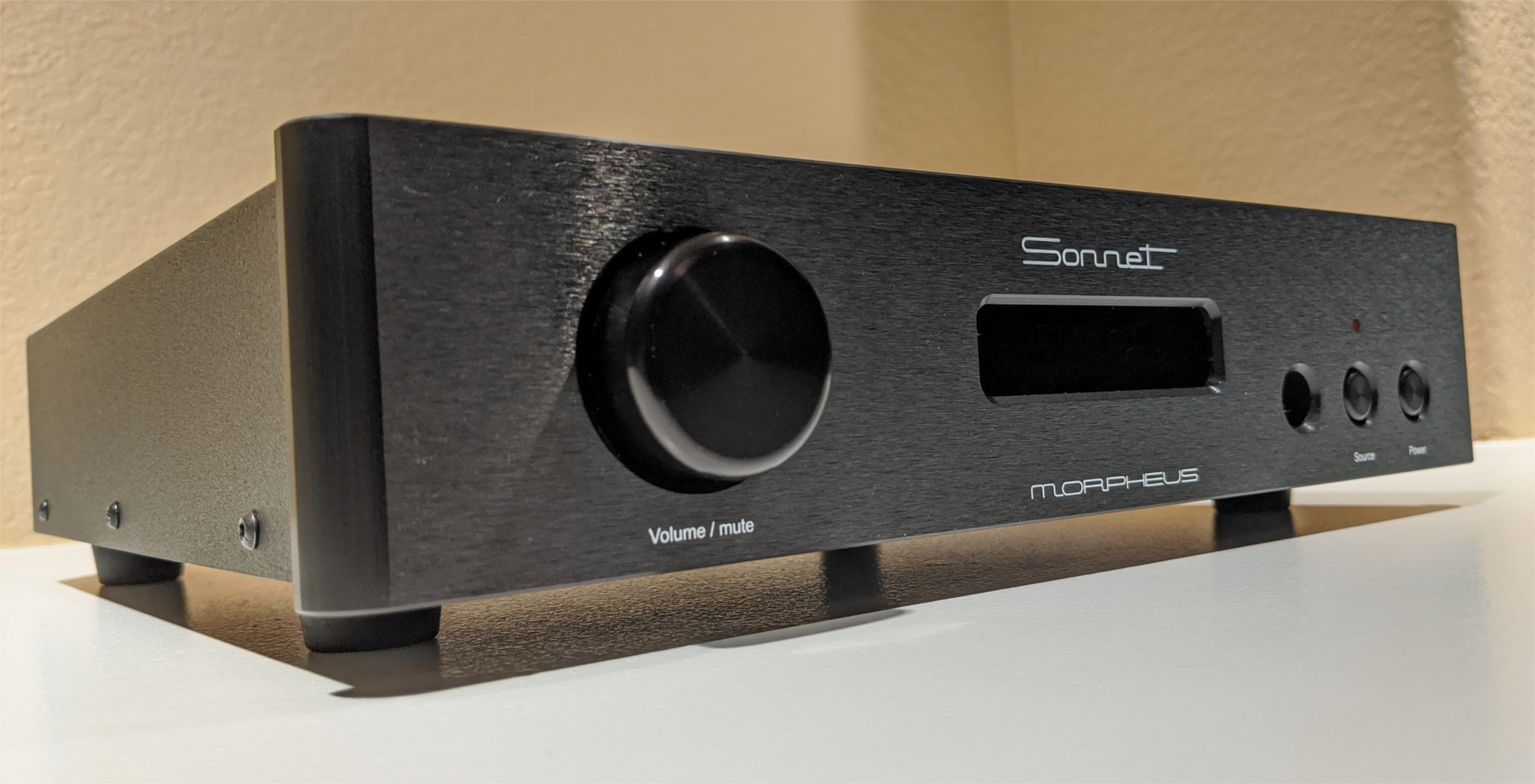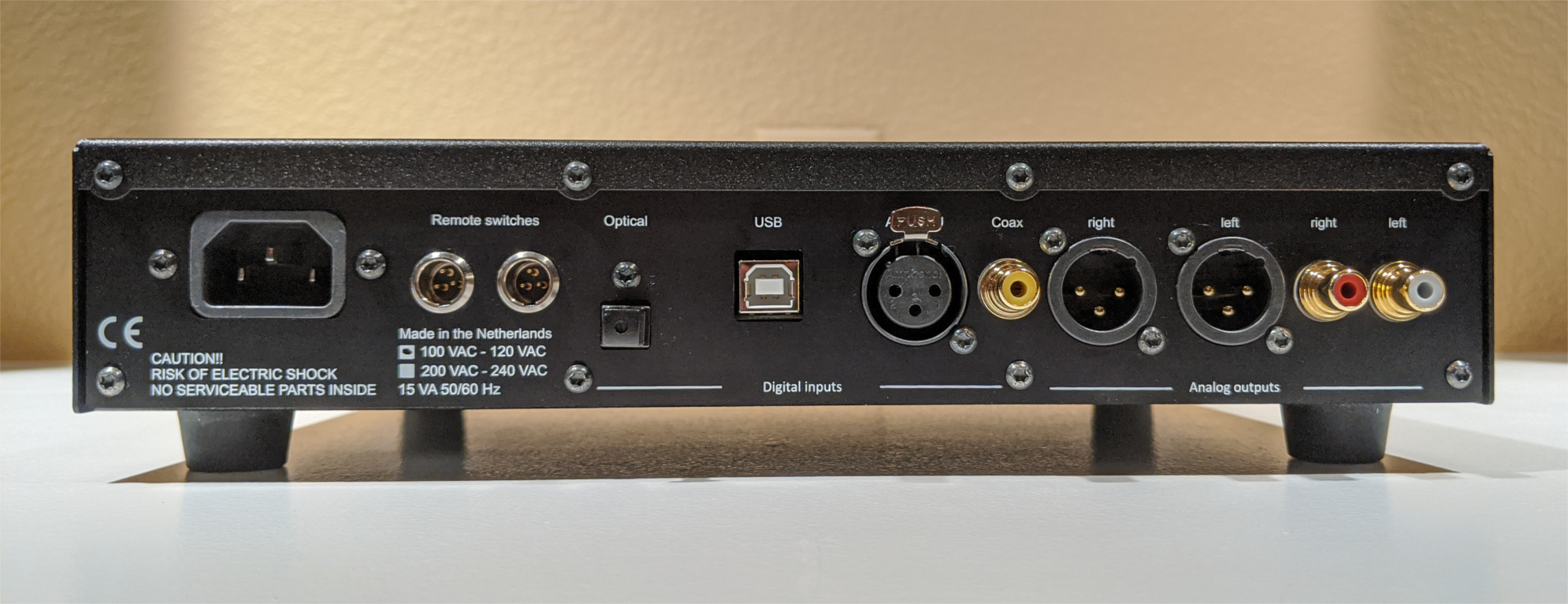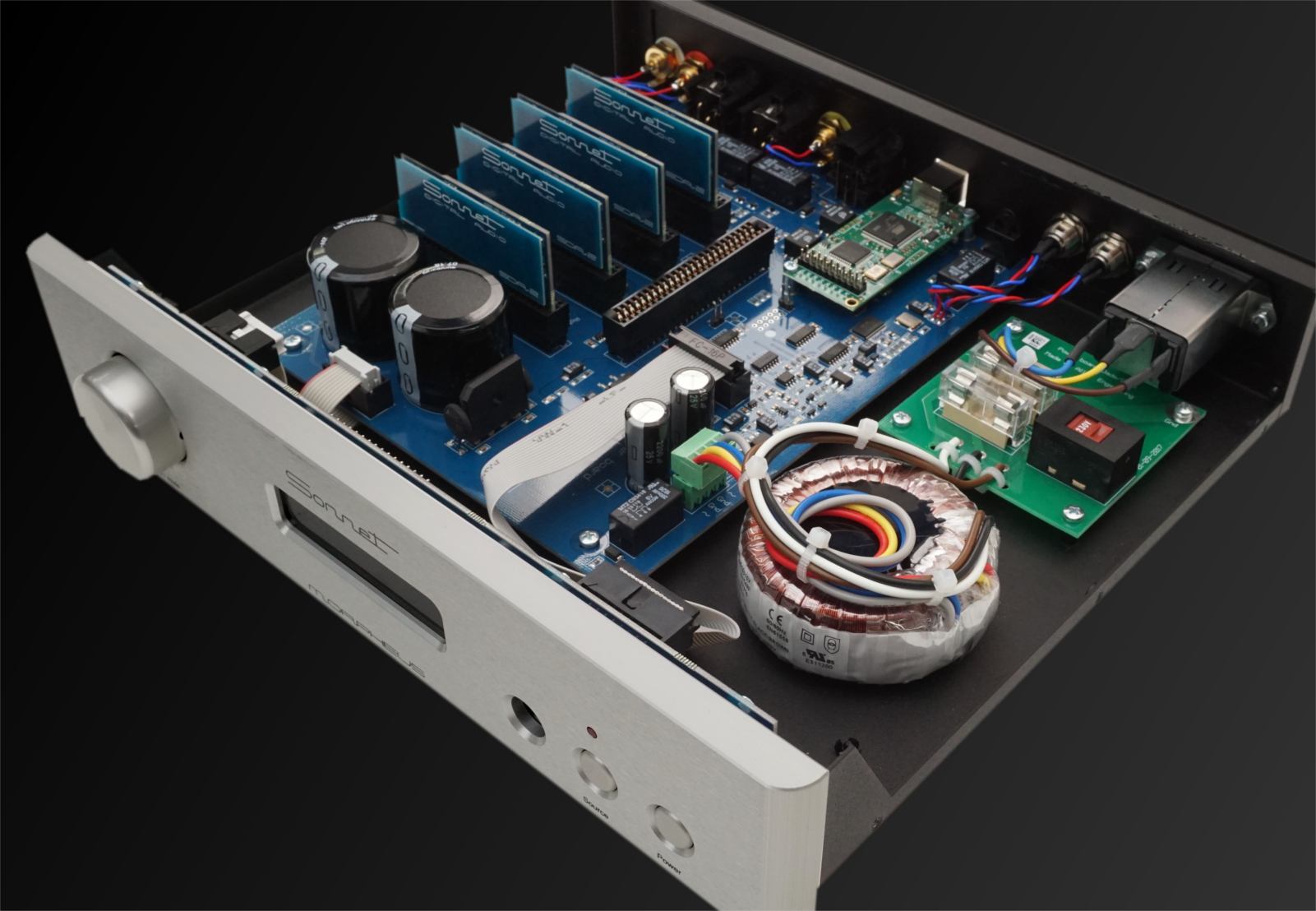by Kevin OBrien on February 27, 2020
SONNET DIGITAL MORPHEUS DAC REVIEW
We have finally taken delivery of the highly anticipated Sonnet Digital Audio Morpheus DAC. Sonnet Digital Audio was founded by Cees Ruijtenberg and Lion Kwaaijtaal out of the Netherlands. Cees is known for his work at Metrum Acoustics, which is now under different ownership, which produced some very fine converters for the money. Since selling Metrum, Cees has been very busy coming up with yet another affordable converter, but this time he's making waves.
The Metrum converters, that most of us are now familiar with, used an R2R infrastructure that is also known as a "ladder DAC". The Morpheus applies the same principle as the successful Metrum Pavane DAC but now has double the ladders, a lossless volume control (that can be defeated), and a much smaller footprint due to less power demand from the FPGA technology Sonnet has recently developed. These are all good things when it comes to D to A conversion and rack space. It's great to see such a small form factor produce such a big, impactful presentation. The Morpheus measures 11" wide by 10" deep by 3" tall and weighs in at just over 7 lbs.
We paired the Morpheus with our YFS modified Mac Mini to feed it a data stream for burn-in via its USB input. We burned the unit in per Cees' recommendation at 3 weeks of continuous play. Yes, burn-in is real. Just to make sure, we listened to the Morpheus right out of the box to see what we were getting into. The tone was great and we immediately knew this was going to be a special piece. But fast forward to now and we noticed things sounded even better. So, yes, burn-in does in fact make a difference and every DAC manufacturer we've worked with has recommended at least two weeks of play before coming to any conclusions. The rule of thumb for digital gear is 500 hours of use prior to hearing what the final presentation will be and that rule applied to the Morpheus.
We were impressed when we opened the shipping container and laid our eyes on the smooth machined black faceplate and black body. We've encountered much more impressive industrial designs in our tenure but the Morpheus has a proper fit and finish to dictate its price. We are of the stance that dollars should be put to use on the innards of gear, not on the external chassis. If you're just looking for 'audio eye candy', you may want to go elsewhere. If you want an affordable, well-executed piece of gear with a good look and amazing sound, this is it.
Let's quickly go over how to operate the Morpheus. Press the 'source' and 'power' buttons on the front panel simultaneously to access the Morpheus user menu. From here you can adjust display settings, you can turn the volume control on or off, and you can change volume settings for different sources. Here is a link to the Morpheus product manual which should help you get familiar with this feature-packed R2R converter.
A notable feature that impressed us right out of the gate was the sturdy remote control machined from a solid piece of aluminum. The remote felt hefty in our hands and was not an afterthought. After all, the remote is your connection to the gear and must work efficiently, accurately, and be well thought out. We never had an issue getting the Morpheus to react to our commands via remote control which is a welcomed change from some of the other gear we've used at audio shows.
The lossless, defeatable volume control was the main source of our interest in the Morpheus. Many DACs on the market offer an onboard volume control to allow the omission of a preamp. Yet, the volume control is one of the most important pieces in the audio chain. If not taken seriously, bad things can happen in your system. After defeating the volume control and then turning it back on, we couldn't tell a difference in sound quality. This is the idea behind Cees' lossless attenuation solution and it appears to work as intended.
Another very convenient feature that makes life easier is the ability to set different inputs at various output levels so multiple sources can be gain-matched. This is key when A-B testing different sources in a review environment. The illuminated front panel indicator can also be set to turn off in increments from 60 seconds to 1 second or stay on indefinitely. We also liked this as front panel lights can become annoyingly bright when listening in a dark environment. The red power indicator light on the front panel only turns on when the DAC is in stand-by mode.
The Morpheus USB input is manufactured by Amanero. You can find drivers for Windows-based computers for the Morpheus USB input here. You should not need drivers when mating the Morpheus to a Mac or Linux computer. In our case, our YFS Mac Mini saw and recognized the Amanero Combo 384 input receiver without a hitch. We implemented our YFS Custom Ref Split USB cable along with our YFS PS-5 linear power supply to get the best results out of the Morpheus USB input.
We contacted Cees to iron out whether or not a separate linear power supply was needed to power the Amanero USB input. Cees relayed there is an ultra low-noise regulator integrated into the USB input which should allow listeners to use a standard 4-conductor USB cable when hooking up to a computer. This makes for easy pairing to various servers and computers via USB. This also means the Morpheus does not power the USB input with its internal power supply but the power it does get from your computer's USB bus should be regulated and 'cleaned up'. Again, we decided to start with audiophile-grade linear USB power and our Split USB cable to give the Amanero USB input receiver the least amount of work as possible. (Our YFS PS-5 also has an ultra low-noise regulator under the hood but we have much more filtering capacity than the Amanero USB input card).
Now let's talk about inputs and options within the DAC itself. The USB input did sound good but we noticed a lack of DSD support. This wasn't a deal-breaker by any means and is to be expected at this price-point. You do get MQA support however by purchasing a small module that can be plugged into the main DAC board (see the open slot in the pic below). Pricing comes in at just over $200 and can be user-installed. An I2S module can take the place of the USB input which gives you greater flexibility when linking up to certain music servers that incorporate that same I2S protocol. Here's a link to the Morpheus accessories that are currently available. The use of our YFS modified Mutec MC-3+USB SPDIF converter took the Morpheus to another level and we ended up listening to the AES/EBU input for the sound quality / presentation portion of our review.
As far as sound quality, well, I think this is the most important section of the review. We were impressed to say the least and it didn't take long for things to sink in after spending a few days with the Morpheus in our demo system. The tone coming out of this DAC is just right, not too bright but not too laid back either. The Morpheus just gives you a clear picture into your source material, which is good and bad. Play an average recording and you get an average presentation. We started hearing things in our recordings that were hidden previously. The Morpheus is squeezing every bit of detail out of the signals its fed, which is a sign of a great converter.
The volume control was implemented in our case and our tubed preamp was bypassed. This was the most exciting feature of the new Sonnet DAC. The overall presentation of the music was now clearer than ever before in our familiar YFS demo system. We couldn't believe what we were hearing at first. We had a difficult time accepting what was being presented in front of us as far as a complete picture of the recording with details and a natural flow of the music. But alas, this is what the Morpheus can do in a worthy system. We are now believers in integrated DAC volume controls. 24 bit accuracy is claimed by Cees and we have to say his claim seemed spot-on.
Comparing the Morpheus to our EMM Labs reference, the DA2, was not really a fair fight. So, we put the Morpheus up against the DA2's little brother, the DAC2X V2. Except for the lack of DSD support, we'd say the Morpheus held its own nicely and we didn't really miss anything when using the Mutec MC-3+USB. The Mutec strips jitter from the digital source, our YFS Mac Mini, and then outputs an 'error-free' data stream to the Morpheus via TOSLINK, COAX, or AES/EBU.
Feed the Morpheus a great signal and it will impress. WOW! All we can say is you need to hear this DAC to really appreciate what it can do. The principle of 'garbage in, garbage out' certainly applies here. Feed the Morpheus a jitter-free good recording and be amazed at what you hear. Our listening room was filled from floor to ceiling and wall to wall with glorious music. The Morpheus exhibited a sound stage on par with some of the best converters we've heard. For the money, this is the most impressive converter we've heard.
Is the Morpheus a giant-killer? We think so! Contact us with any questions you may have. We now have one in-house for demo and we're not letting this tiny piece of digital gear out of our sight.
Thank you for reading. Until next time...
- YFS Design Team





